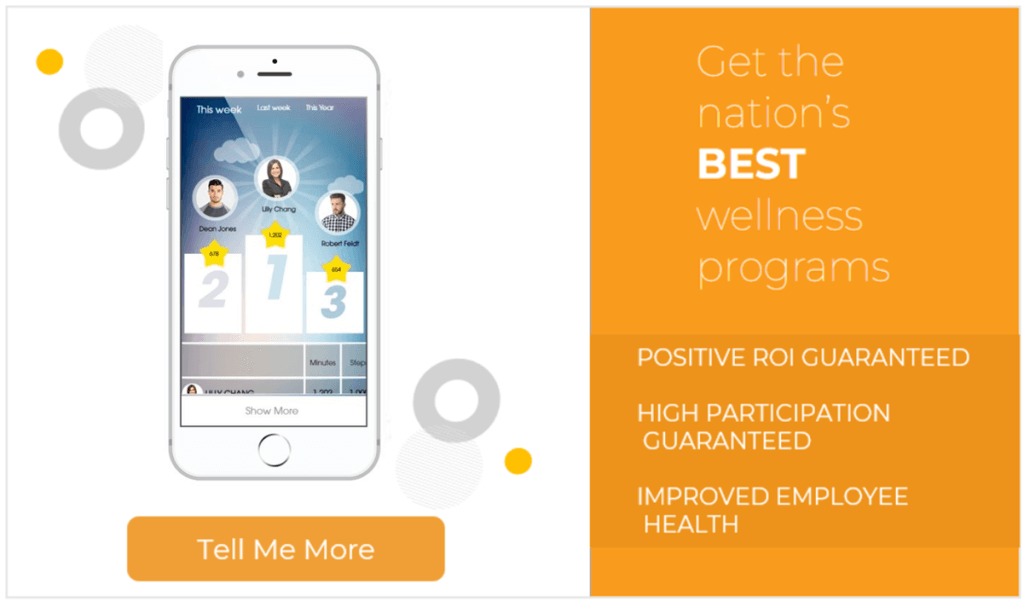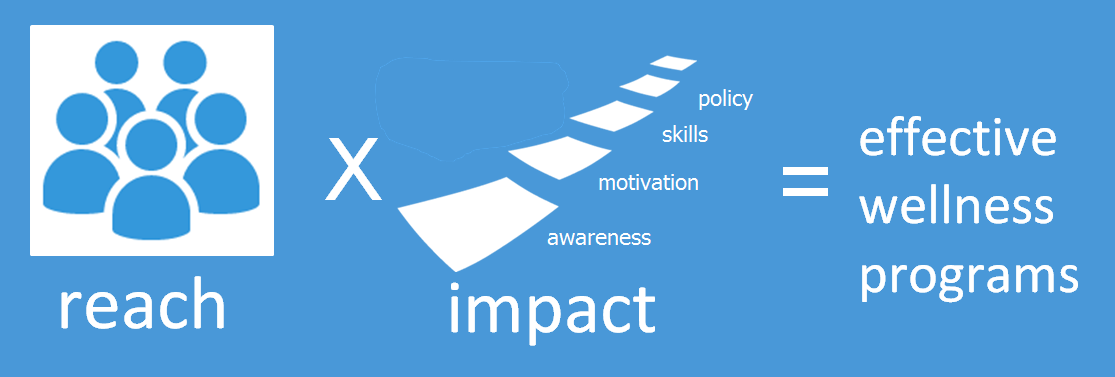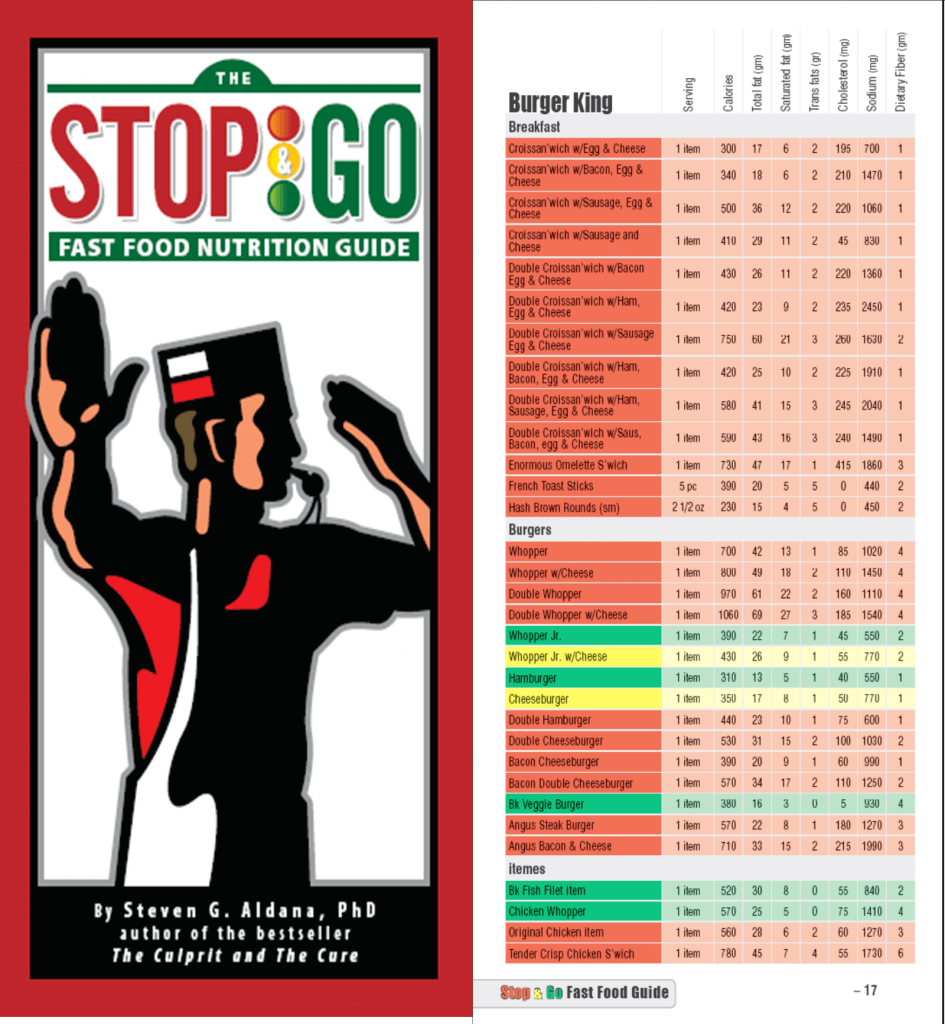At the core of every effective worksite wellness program are wellness activities that help employees adopt and maintain healthy behaviors. These activities involve full employee wellness campaign ideas that develop into full campaigns or challenges.
Behavior change campaigns usually last between four and eight weeks while wellness challenges can happen in just one or two weeks. The names “campaign” and “challenge” are often used interchangeably. Campaigns can be team-based or they can allow participation as individuals.

Why Employee Wellness Campaigns Are A Big Deal
What makes wellness campaigns important is the fact that they help employees create healthy lifestyle habits. Worksite wellness campaigns should be at the heart of every successful wellness program. When done correctly, worksite wellness campaigns help employees and their dependents improve employee health behaviors and reduce elevated health risks. Wellness campaigns are perhaps the most important part of any effective wellness program.
Worksite wellness campaigns are not easy to create. To have a lasting impact on employee behaviors they must carefully adhere to each of the most important behavior change strategies. Below is one example of an effective worksite wellness campaign.
RELATED: WellSteps Employee Healthy Behavior Campaigns
Employee Wellness Campaigns Process Example
This is the Fast Food Guide Campaign, one of the most popular campaigns that we offer at WellSteps. Here is how it works.
The Fast Food Guide campaign is designed to help employees make healthier fast food choices. Originally, it was designed to help truckers and utility workers improve their nutrition as they typically eat fast food almost every single day. You can read more about the fast food guide here.
Before the campaign begins every employee is going to get either a printed or PDF copy of the guide or they can download the free app. There is a kickoff meeting or video that explains how the campaign works.
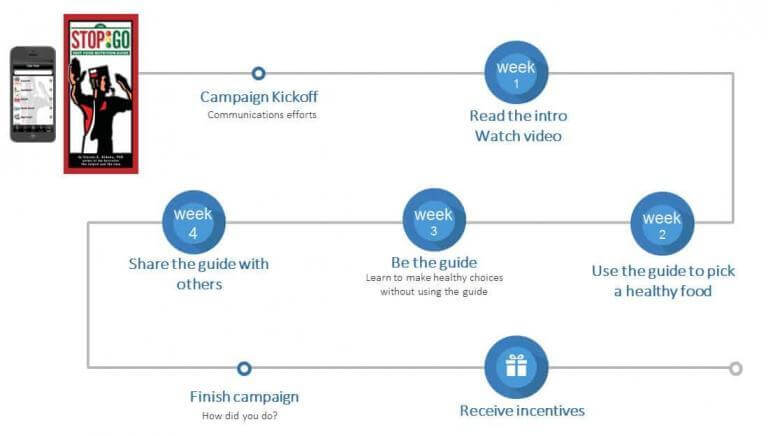
Week One
In week one, every participant watches a short introductory video explaining why it is important to eat healthy and to make healthy fast food selections. This is the portion of the campaign where employees discover why good health requires good nutrition. It also explains why it is so difficult to navigate the fast food landscape.
Week Two
In week two of the campaign, employees are encouraged to use the fast food guide to pick a healthy fast food. They use this tool and actually purchase a healthy option. More importantly they also learn why some foods are and others are not healthy. Learn how to look for grams of saturated fat, trans fats and excessive sodium, while choosing whole grains, fruits and vegetables.
Week Three
In week three they put their new knowledge to work. Without using the guide they are shown how to discern between healthy and not so healthy fast foods. In essence employees learn to be the guide. They learn to internalize the principles of good nutrition so that they can go to any fast food restaurant and still make healthier choices.
Week Four
In week four, they share their fast food guide with someone they care about. They can either give them the printed copy of the book or they can tell them where to download the app. The idea is to create social support by sharing the guide with others. Employees will report on how they did, and the campaign will end.
Rewards
Once it is known who has registered and completed the wellness campaign, gift cards or small prizes are randomly awarded to a few of the employees who have finished everything. Not every participant gets the incentive. The incentives are a powerful part of the motivation to get employees to engage in the campaign to the first place.
Effective employee wellness campaigns are strategic. They are created based on solid behavior change science.
What is important to note is why the various components of this campaign are written and included the way they are. Effective employee wellness campaigns are strategic. They are created based on solid behavior change science. The Fast Food Guide challenge, along with all the WellSteps campaigns, are based on these exact same behavior change principles. They are the secret sauce of improving employee health.
RELATED: Employee Health Programs Worth Investing In
How The WellSteps Employee Wellness Campaigns Process Is So Effective
Every WellSteps campaign is based on the behavior change principles derived from the RE-AIM framework for sustainable behavior change. This behavior change model states that to have effective behavior change an intervention or campaign in this case, must have both reach and impact. The behavior change intervention must reach as many people as possible and it must impact their health behaviors.
To some, this may sound like just a lot of scientific mumbo-jumbo but this is important. To have wide reach, a wellness program must touch every single employee in multiple ways with multiple messages all delivered at the right time. Effective reach is nothing more than effective marketing.
Here is the complete guide to employee wellness program engagement. It is the model we use to get maximum reach for every campaign we offer. The best employee wellness campaigns in the world are worthless if your program does not have reach.
Yes, that also means that you need to leverage technology to give employees every opportunity to participate either through a computer, a mobile device or traditional paper versions of your campaigns.
AMSO: One of the Best Employee Wellness Campaign Ideas
In addition to having very good reach, corporate wellness campaign must also have a significant impact. To create effective employee wellness campaigns WellSteps uses the AMSO (Awareness, Motivation, Skills, and Opportunities) behavior change model.
We changed the “O” in AMSO to include more than just opportunities. For us, this part of the model includes policy changes, environmental and social support. Rather than call this Opportunities, we just use the work “policy”. The AMSO model guides everything that we do.
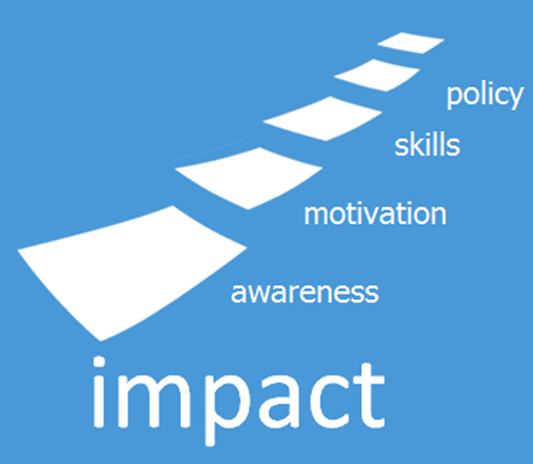
It includes the four components that are essential to every successful wellness campaign. We go to great lengths to verify that each of these four components is represented in every single campaign.
The four components are pretty easy to understand. Awareness and education is the “what” of behavior change. The motivation is what drives us to change. The skills and tools portion is the “how do I do this?” part, and the policy and environment part is a conglomeration of environmental changes, policy and environmental changes, and support from others that all help us to be successful.
Which one do you think is the most powerful and helping people adopt and maintain healthy behaviors? The most important part of the behavior change process is actually policy and environment. About 40% of the success of behavior change happens when we establish a supportive environment and when we receive peer support from others.
The most important part of the behavior change process is actually policy and environment. About 40% of the success of behavior change happens here.
The least important aspect of this model is awareness and education at just 5%, yet this is where most wellness programs spend most of their time and budgets. Let’s take a deeper look into each one of these components and how they are used to create effective employee wellness campaigns.
RELATED: 10 Steps to Implement Mindfulness In The Workplace
Awareness and Education
All of us are familiar with this part of the behavior change process because it is the easy part of wellness. Wellness programs use many forms of communication to create wellness awareness, such as:
- health risk appraisals
- biometric screening
- posters
- flyers
- videos
- books
- email notifications
- text messages
- payroll stuffers
- Internet sites
- magazines
- lunch and learns
- special speakers
- company newsletters
- blogs
Each of these wellness activities help individuals become aware of and educated about good health practices. They help us understand what health risks are and what it really means to have an elevated health risk. They help us learn whether or not we have elevated health risks or unhealthy behaviors. You can’t begin to change an unhealthy behavior unless you can identify unhealthy behaviors.
You can’t begin to change an unhealthy behavior unless you can identify unhealthy behaviors.
This blog article is an example of how awareness and education can work. As you read and look at the images you are becoming aware of and educated about the WellSteps approach to successful wellness programming.
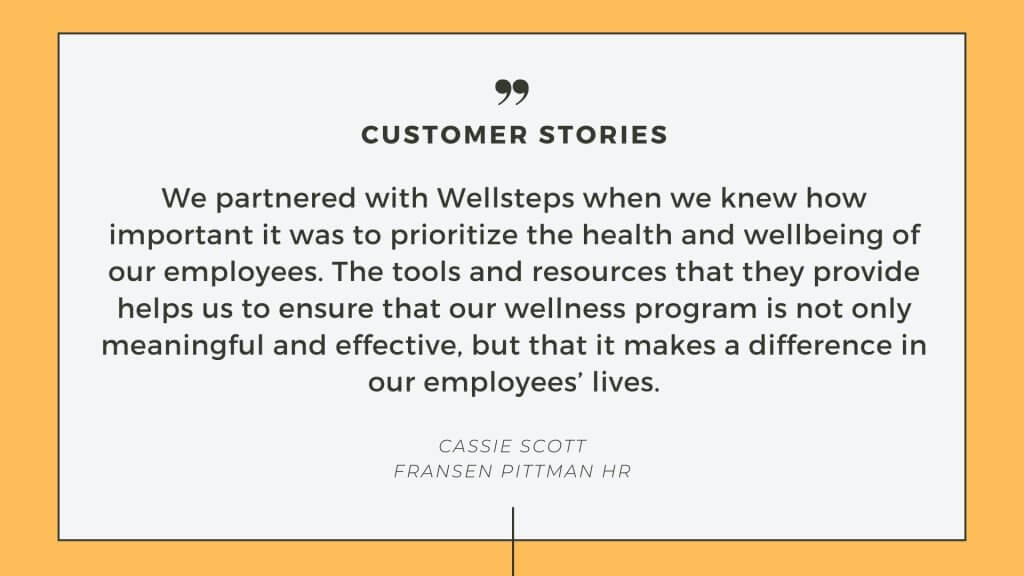
In week one of the fast food guide campaign described above, participants learn about the importance of making healthy nutrition choices. The video and content in week one is the education and awareness component of this campaign. It is the first step in helping people down the road to successful behavior change.
Motivation
Many wellness programs aim to inspire employees to engage in various health-enhancing activities. While offering incentives is a common strategy to motivate employees, it is only one strategy. Behavior change often stems from various sources.
Think back to the last significant behavior change you made. What prompted that change? Was it due to peer pressure, a desire for improvement, love, fear, or simply the aspiration for a better life? We change behaviors many different reasons. Peer pressure, love, the desire for something better, fear, and just wanting to improve our lives can provide ample motivation to change.
In every WellSteps campaign, like the Fast Food Guide Campaign mentioned above, incentives are utilized. These incentives, typically small monetary or tangible rewards, are randomly distributed among employees who complete all the steps of the wellness campaigns. Interestingly, it’s not the incentive itself that serves as the motivator, but rather the anticipation of winning it that encourages participation. While not everyone may win, the possibility is enough to drive engagement.
RELATED: 18 Wellness Program Incentive Ideas From the Best Corporate Wellness Programs
Skills and Tools
Equipping individuals with the necessary skills and tools is crucial for successful behavior change, yet it’s often overlooked. This is that “how” of behavior change. It is one of the most important aspects of successful behavior change. While biometric screenings can help individuals understand their current health risks, without the requisite skills to mitigate these risks, improvement remains elusive.
Awareness and motivation serve as initial steps in the behavior change process. However, without the essential skills and tools, failure becomes inevitable. As wellness professionals, it’s imperative to demonstrate precisely how to enact behavior change and overcome barriers hindering healthy living.
For instance, maintaining a healthy diet requires skills such as knowing how to shop for, purchase, and prepare nutritious foods. Understanding nutrition labels, identifying quality produce, and even cultivating a garden are all valuable skills. Those who have a healthy lifestyle have mastered most of the skills needed to be healthy.

Healthy individuals often know how to identify foods that are good for them and foods that should be avoided. They know how to bargain shop for healthy foods, how to identify high-calorie foods and to control portion sizes. These individuals have learned that many times they can share a meal with someone else and still have plenty of food left over.
All of these are specific skills that have to be demonstrated, learned, and mastered if behavior change is to become permanent. There are skills for healthy nutrition, exercise, stress management, relaxation, conflict management, and tobacco avoidance. Wellness programs need to demonstrate and teach the skills that people need to have healthy behaviors. This learning can take place during lunch and learns or by viewing the web.
RELATED: 13 Fun Workplace Wellness Challenge Ideas Your Employees Will Enjoy
Resources Available for Tools
The Stop and Go Fast Food Nutrition Guide that is used in the Fast Food Guide wellness campaign is just a tool. It’s free to everyone with a mobile phone. This guide gives employees the tools and skills they need to navigate the fast food world and make the healthiest selections possible.
In addition to skills, sometimes we need specific tools to help us. For example to prepare and eat Thai food, which is a delicious way to eat a lot of vegetables, there are certain tools you will need. You need have the right spices, a good skillet, and the right recipes. Employees who exercise on a regular basis may need access to a gym, exercise clothes, exercise shoes, sports equipment, or even a company-sponsored sports team to encourage them to participate.
There are lots of tools that are our disposal to help us eat right and exercise regularly. You don’t necessarily have to buy all the required tools for your employees but you do have to educate them about how the tools can be used and where they might find them.
You don’t necessarily have to buy all the required tools for your employees but you do have to educate them about how the tools can be used and where they might find them.
For example, employees who want to walk at lunch could use a map of the local walking trails and paths to help them find the right location and distance. A map of the local walking trails or paths is a tool that can help them accomplish their goal. All workplace wellness campaign should prove employees with the tools and skills they need to be successful.
RELATED: WellSteps Program Mobile App
Policy and Environment and Social Support
The last step of the behavior change process is the most important one. It’s not just about changing the culture and environment, it’s about altering policies of the worksite, creating social support, and changing the physical environment. It’s the most important because it has the largest impact long-term on helping people have healthy behaviors.
Smoking Policies
Nationally, about 13% of the population smokes cigarettes, but in California the smoking rate is much lower. Why is this the case? The main reason is because the state of California has implemented a variety of smoking policies, more than any other state. There are few places where a person can smoke in California.
You cannot smoke at the beach or in a public park; your car and your own home are about the only places you can legally smoke. Strict policies are not necessarily the solution to having a successful wellness program, but carefully crafted and supportive policies are.
Strict policies are not necessarily the solution to having a successful wellness program, but carefully crafted and supportive policies are.
Healthy Food Policy
Having healthy food options in a company cafeteria is a policy: no one is being forced to eat healthy foods, but at least the healthy foods are present, and they can be sold at a lower price point. This policy makes it easier for people to purchase and consume healthier foods over less-than-healthy foods.
Family Support
Humans are very social creatures. We depend upon each other for many things, including our attempts to be healthy. Spouses and significant others are perhaps the most important part of a successful behavior change effort. It is possible to change behaviors without the help of others, but it is extremely difficult. It is easier to be healthy when someone is joining us on this journey.
Obviously it can cost more money to include spouses and significant others in your employee wellness program. But it’s likely you are paying for the medical expenses of spouses and significant others. If the goal of your wellness program is to reduce employee medical expenses, it only makes sense that you would help all plan members improve health behaviors.
If the goal of your wellness program is to reduce employee medical expenses, it only makes sense that you would help all plan members improve health behaviors.
Spouses and significant others should be able to participate in your incentive plan, team competitions, lunch and learns, and they should be receiving your wellness newsletter and emails. They should be invited to participate in as much of the wellness program as possible. The best employee wellness programs recognize the importance of social support and do everything they can to help employees get help from others.
Support In All Areas
In week four of the Fast Food Guide wellness campaign, employees are encouraged to share the guide with someone they care about. This social sharing cultivates strong social support. The AMSO behavior change model tells us that your employees will be way more successful when they have support and encouragement from others.
Below you will find a re-labelled image so you can see where each component of the AMSO model fits into the Fast Food Guide Campaign. Each week of every campaign tries to focus on a different component. Successful campaigns use most if not all aspects of the AMSO model. Sometimes you have to get creative to get them all included, but the result is worth it.
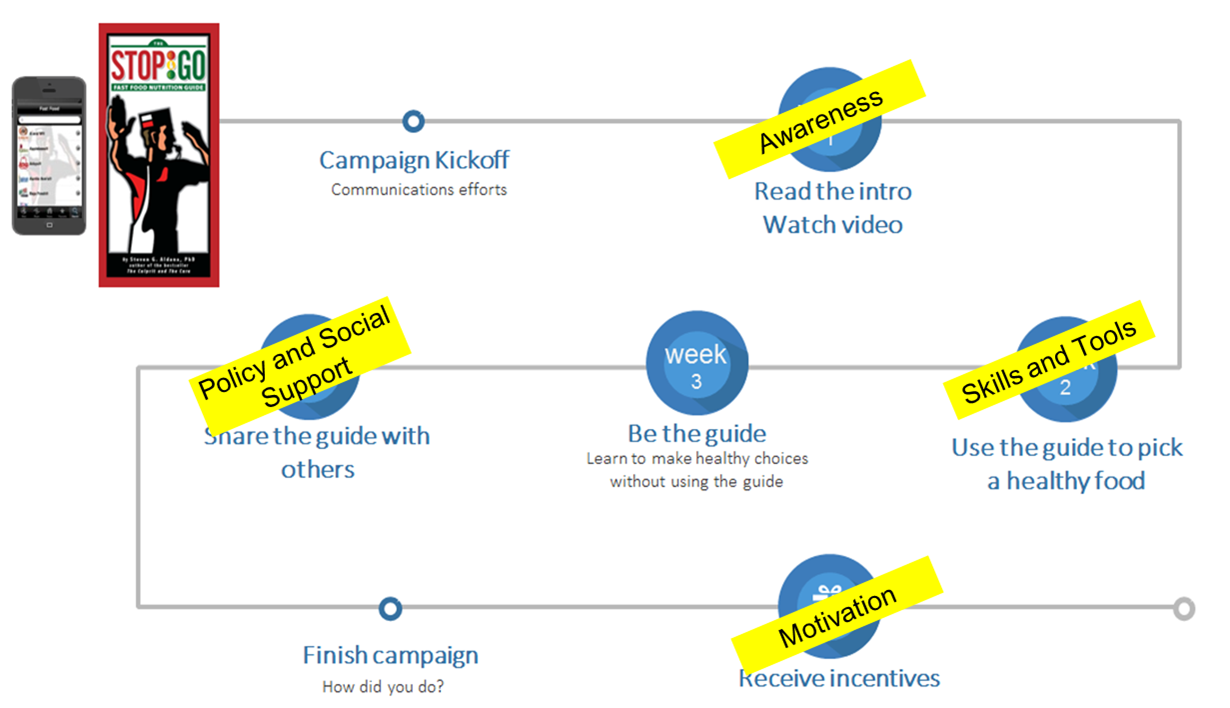
When employees participate in well designed campaigns, they adopt and maintain new behaviors. Employees get improved health and employers get healthier, more productive employees. We’ve been using this approach for many years and we have lots of published scientific studies that show our campaigns work.
RELATED: WellSteps Model and Published Research
More Wellness Campaign Ideas
Today we mentioned just one of the campaigns created by WellSteps. Even though they all focus on different health behaviors, every one of them uses the four components of this behavior change model. Each one has a component of education and awareness, motivation, a set of tools and skills, and policy or environmental supports that make behavior change possible.
It is these four steps in the behavior change process that help the campaigns succeed. This is the best that science has to offer on how to create effective wellness campaigns and ultimately effective wellness programs. To implement the same in your business, schedule a free demo with our team and discover how a few wellness campaign ideas can make a huge difference in the health and wellbeing of your employees.
